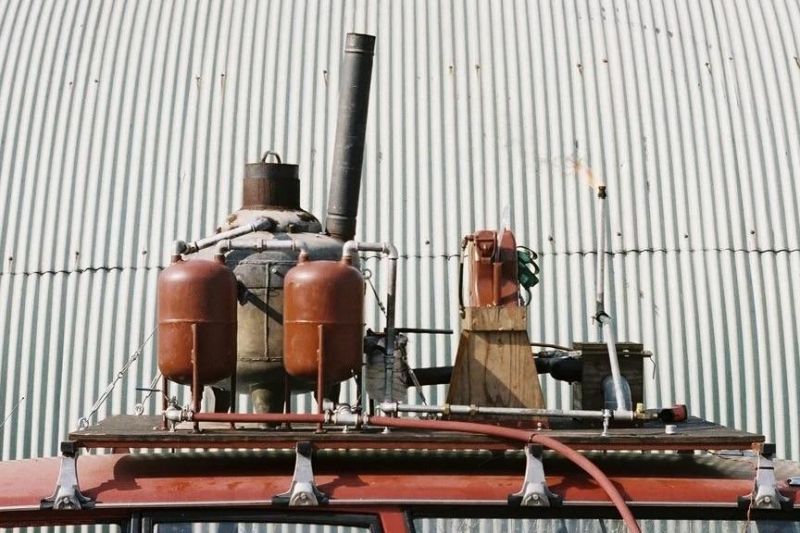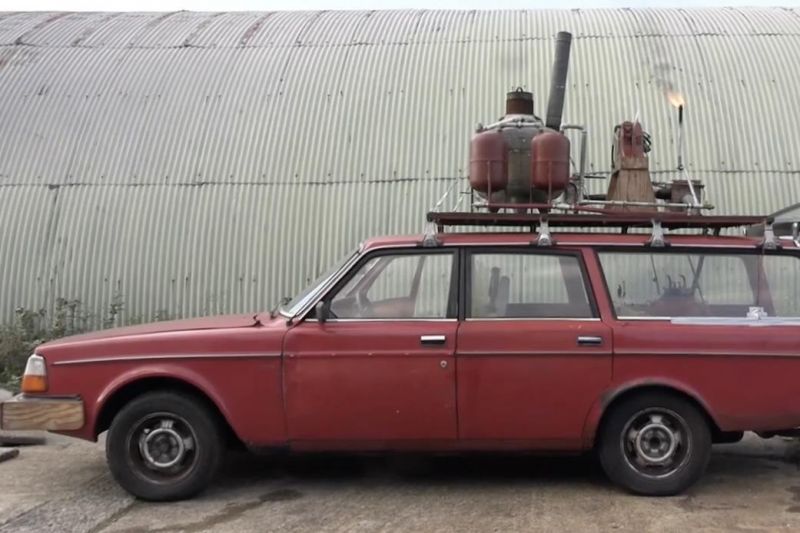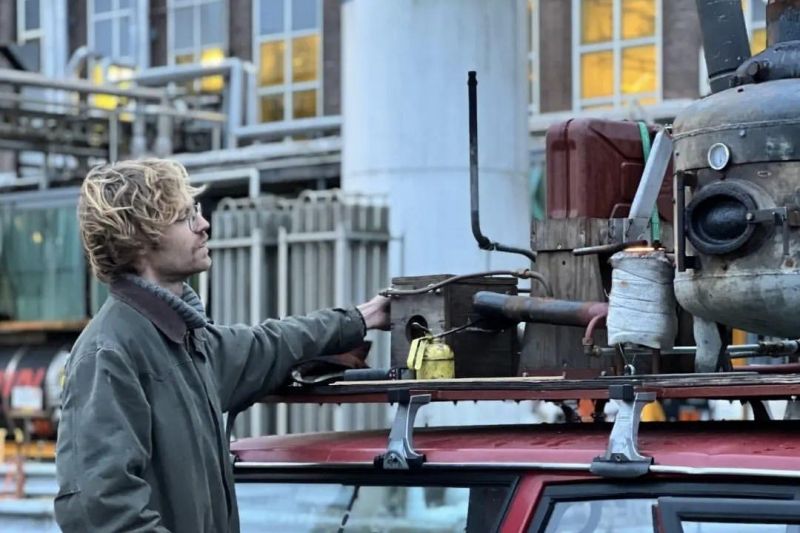A Dutch designer has retrofitted a scrapyard car to run on a unique type of alternative fuel: plastic waste that has been turned back into oil.
Gijs Schalkx is the man behind the project dubbed ‘The Plastic Car (Is Made of Metal)”, which uses a clapped-out diesel Volvo 245 fitted with a roof-mounted “de-refinery” that heats plastic to create the oil used as fuel.
The Volvo project follows Mr Schalkx’s Sloot Motor motorcycle, created as part of a university product design course, which could run on methane harvested from bogs.
Mr Schalkx told Dezeen magazine that he wanted to build on ideas of sustainable living by creating a car that ran on an environmentally minded fuel source, and chose plastic as he had plenty available in his household recycling.
He sourced the 245 from a scrapyard in Germany, repaired it to a road-legal condition, and fitted the de-refinery on the roof.
To produce fuel, plastic is loaded into the system’s reactor and burned in an oxygen-free environment, where it then evaporates into gas.
The gas then condenses into oil that makes its way down a tube and into a tank in the back of the Volvo, where it can then be used as fuel.
Mr Schalkx drove the car for around six months to film a video of his work, during which time he only fuelled it using his own household recycling and limited himself to only driving as far as that would allow him.
The Volvo consumes around one kilogram of plastic every seven kilometres, and the refinery can take upwards of an hour to produce 12 litres of oil.
Mr Schalkx told Dezeen that the process was “very inefficient” as the car would only cover around 100 kilometres a month, though that was part of the project’s point.
He pointed out that cars would never be efficient across both their manufacturing and operation, and his project was a way of “being honest” about that fact.
In response to people criticising the project for its burning of plastic, Mr Schalkx said he took issue with what car manufacturers constituted as “sustainable design” and instead wanted to focus on repurposing what was already available.
As a result, the project promotes reuse and repair through increased knowledge of how things work.
You can learn more of Mr Schalkx’s projects on his website here, or his Instagram page here.










